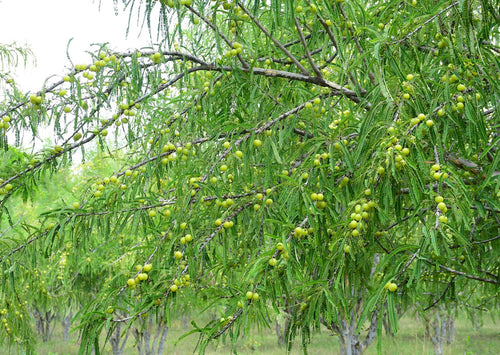Silox India Plants Miyawaki Forest at Kherdi Devasthanam for a Greener
Silox India is a forward-thinking company committed to environmental sustainability and social responsibility. In a bold move to combat climate change Read more
Project Update 5


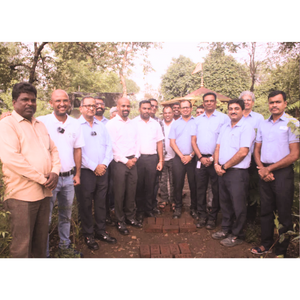
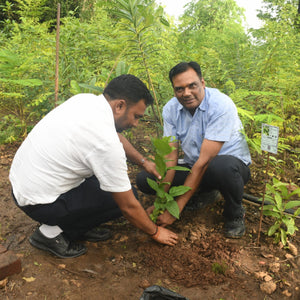
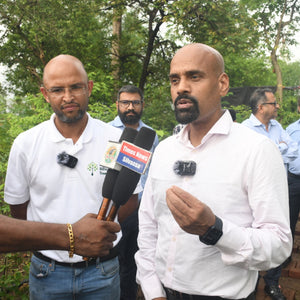

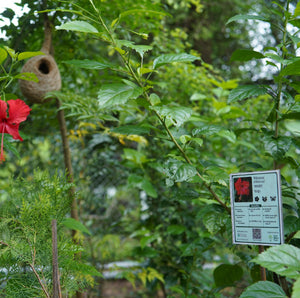

Project Update 4
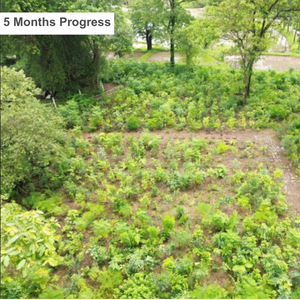

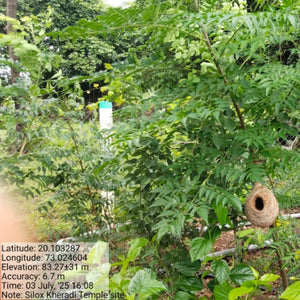
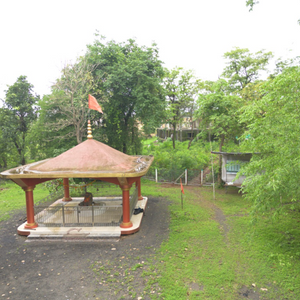

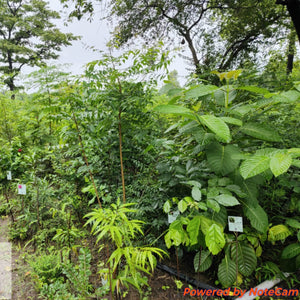


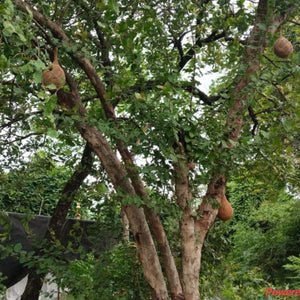
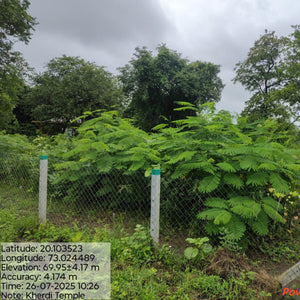
Project Update 3







Project Update 2


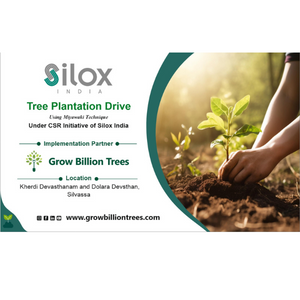



Project Update 1
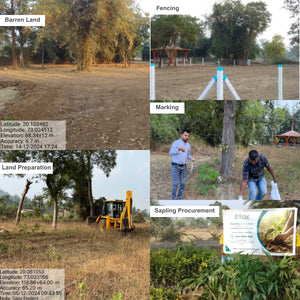











Digital Forest
Forest with 6,200 Trees planned
Want to plant your tree now?
Plant a Tree @ 299Silox India Plants Miyawaki Forest at Kherdi Devasthanam for a Greener Future
Silox India is a forward-thinking company committed to environmental sustainability and social responsibility. In a bold move to combat climate change, the company has undertaken a transformative tree plantation drive at Kherdi Devasthanam using the innovative Miyawaki method. This initiative aims to create dense, fast-growing forests that will not only address climate challenges but also enhance biodiversity and improve air quality.
Strategically located near the revered temple at Kherdi Devasthanam, the plantation serves as a profound symbol of the harmony between nature and spirituality. Silox India’s efforts extend beyond ecological restoration, inspiring employees and local communities to actively participate in environmental conservation. By integrating education and awareness into this initiative, the company fosters a deeper understanding of sustainability. Through this impactful project, Silox India reaffirms its commitment to a greener, healthier planet while nurturing a strong connection between cultural heritage and environmental stewardship.
Project Planning & Execution
No of Trees: 6200
Plantation Location: Kherdi Devsthan, Dadra & Nagar Haveli, Kherdi, Silvassa, 396230
Plantation Duration: December 1st 2024 to January 17th 2025
Species Selection & Its Benefits:
| Layer Category | Common Name | Scientific Name | Benefits |
|
Canopy Trees
|
Arjun | Terminalia arjuna | Supports heart health; used in Ayurvedic medicine. |
| Bakayan | Melia azedarach |
Natural pest repellent; used for shade and ornamental purposes.
|
|
| Gulmohar | Delonix regia | Ornamental; provides shade and enhances landscape beauty. | |
| Jamun | Syzygium cumini | Fruit-bearing; beneficial for diabetic health. | |
| Jack fruit | Artocarpus heterophyllus | Provides nutritious fruit and shade. | |
| Kachnar | Bauhinia variegata | Ornamental and medicinal; supports pollinators. | |
| Karanj | Pongamia pinnata | Nitrogen-fixing; used for biofuel and erosion control. | |
| Kadamb | Neolamarckia cadamba | Fast-growing; attracts bees and birds. | |
| Mahogany | Swietenia mahagoni | Timber-yielding improves microclimate. | |
| Mahua | Madhuca longifolia | Edible flowers support tribal livelihoods. | |
| Mango (Kesar) | Mangifera Indica | Fruit-rich; provides nutrition and income. | |
| Neem | Azadirachta indica | Antibacterial; purifies air and soil. | |
| Palash | Butea monosperma | Sacred tree; supports soil fertility and wildlife. | |
| Peepal | Ficus religiosa | Releases oxygen at night; sacred and biodiversity-friendly. | |
| Sheesham | Dalbergia sissoo | Timber tree; prevents soil erosion. | |
| Teak | Tectona grandis | High-value timber; improves carbon storage. | |
|
Trees
|
Ashoka | Polyalthia longifolia | Ornamental; noise and dust barrier. |
| Amaltas Tree | Cassia fistula | Medicinal; supports pollinators with vibrant flowers. | |
| Amla | Phyllanthus emblica | Rich in Vitamin C; enhances immunity. | |
| Bamboo | Bambusa vulgaris | Fast-growing; used in construction and carbon sequestration. | |
| Bel | Aegle marmelos | Sacred; improves digestive health and soil fertility. | |
| Ber | Ziziphus mauritiana | Drought-resistant; nutritious fruit. | |
| Chirol | Holoptelea integrifolia | Used in traditional medicine; windbreaker tree. | |
| Custard apple | Annona squamosa | Fruit-bearing; supports food security. | |
| Guava | Psidium guajava | Nutritious fruit; supports local farming. | |
| Gular | Ficus racemosa | Attracts birds and bees; improves soil health. | |
| Harshringar | Nyctanthes arbor-tristis | Medicinal and fragrant; used in religious offerings. | |
| Lemon | Citrus limon | Rich in Vitamin C; fruit and ornamental value. | |
| Shami | Prosopis cineraria | Drought-tolerant; nitrogen-fixing and culturally significant. | |
| she-oak | Casuarina | Windbreak; stabilizes coastal and sandy soils. | |
|
Shrubs
|
Areca palm | Dypsis lutescens | Indoor air purifier; aesthetic value. |
| Bottel Brush (Golden) | Melaleuca bracteata | Ornamental; attracts pollinators. | |
| Bottel Brush (Red) | Melaleuca citrina | Ornamental; supports bird activity. | |
| Bougainvillea | Bougainvillea | Drought-resistant climber; adds visual appeal. | |
| Chameli | Jasminum | Fragrant flowers; supports pollinators. | |
| Champa (White) | Plumeria alba | Sacred and fragrant; attracts insects and birds. | |
| Duranta (Golden) | Duranta erecta | Ornamental; attracts butterflies and bees. | |
| Firebush | Hamelia patens | Attracts hummingbirds and butterflies; ornamental. | |
| Gudhal | Hibiscus | Medicinal and ornamental; attracts bees. | |
| Kaner (Red) | Nerium oleander | Hardy ornamental; drought-tolerant. | |
| Kaner (White) | Nerium oleander | Hardy ornamental; adds aesthetic value. | |
| Kaner (Yellow) | Thevetia peruviana | Ornamental; supports pollinator activity. | |
| Karonda | Carissa carandas | Fruit-bearing; spiny hedge for protection. | |
| Mehandi | Lawsonia inermis | Used for natural dye; medicinal properties. | |
| Morpankhi | Thuja occidentalis | Evergreen hedge; ornamental and air-purifying. | |
| Pomegranate | Punica granatum | Nutrient-rich fruit; supports agroforestry. | |
| Rose | Rosa | Ornamental and fragrant; symbolic value. | |
| Phalsa | Grewia asiatica | Summer fruit; medicinal and cooling properties. | |
| Trumpet bush | Tecoma stans | Ornamental; drought-resistant and pollinator-friendly. | |
|
Herbs & Groundcover
|
Kochia | Bassia scoparia | Ornamental and used for soil stabilization. |
| Lemon grass | Cymbopogon citratus | Medicinal and aromatic; repels insects. | |
| Trumpet vine | Campsis radicans | Climber; attracts hummingbirds and bees. |
Beneficiaries Details
-
Target Population: Villagers of Kherdi Devasthanam, local community members, and volunteers involved in the project.
-
Age Group: All age groups, focus on children, adults, and seniors.
-
Gender: Inclusive of all genders
-
Social & Economic Status: Open to all social and economic backgrounds, with a focus on community participation
Planting Methodology and Its Advantages
Miyawaki Technique: The Miyawaki technique is a dense afforestation method that promotes rapid green cover using native plant species. It consists of rapidly growing vegetation that develops 10 times faster and becomes 30 times denser than conventional plantations. By closely planting a diverse mix of flora, it creates a self-sustaining ecosystem that requires minimal maintenance. This method enhances biodiversity, improves air quality, absorbs carbon dioxide, and restores degraded land. Due to its high-density plantation style, it is especially effective in urban areas, offering environmental benefits such as temperature regulation, noise reduction, and soil enrichment.
Four-Step Process of Planting a Miyawaki Forest:
1. Preparation and Analysis
- Site Analysis: Begin with a thorough analysis of the site, considering factors like soil type, water availability, and sunlight exposure. This analysis guides the selection of native plant species best suited for the location.
- Soil Preparation: Clear the area of weeds and debris. Loosen the soil by tilling and amend it with organic compost to enhance fertility and moisture retention.
2. Plant Selection and Planting
- Plant Selection: Choose native plant species that are fast-growing, drought-resistant, and indigenous to the region. Diversity is crucial to mimic natural forests and promote ecological balance.
- Planting Technique: Dig pits or trenches for planting saplings, ensuring each has enough space to grow. Plant at a high density, typically 3 to 5 times denser than traditional forests.
3. Care and Maintenance
- Mulching: Apply a thick layer of mulch around the saplings to suppress weeds, conserve moisture, and protect the soil from erosion. Mulch also enriches the soil as it decomposes.
- Watering: Initially, saplings need regular watering to establish their roots. Once established, they require less frequent watering, but regular monitoring remains essential.
4. Monitoring and Growth
- Regular Maintenance: Perform regular weeding, pruning, and pest control during the initial years. Miyawaki forests become self-sustainable as they mature but still require occasional maintenance.
- Monitoring: Keep track of the forest's growth and health, monitoring for signs of stress, disease, or pest infestations and taking timely action when needed.
Four Layers of a Miyawaki Forest
The Miyawaki method emphasizes creating a multi-layered forest that mimics natural forests to achieve rapid growth and high biodiversity. Here are the four layers typically found in a Miyawaki forest:
- Canopy Layer: This topmost layer consists of tall trees that provide the canopy. These trees are usually fast-growing species that can reach heights of 15 to 30 meters or more. They offer shade and protection to the layers below.
- Tree Layer: Beneath the Canopy layer is the tree layer, consisting of smaller trees and larger shrubs. These plants help fill in the gaps between the taller trees, contributing to the dense foliage that characterizes a mature forest.
- Shrub Layer: Below the canopy, the shrub layer includes smaller shrubs and bushes that provide additional structure and diversity to the forest. These plants play a vital role in attracting pollinators and providing habitat for various wildlife.
- Ground Layer: The lowest layer is the ground layer, comprising ground covers, ferns, and herbaceous plants. These plants help to retain moisture, suppress weeds, and protect the soil. They also contribute to the overall biodiversity by providing habitat for insects and microorganisms.


Each layer in a Miyawaki forest serves a unique purpose and contributes to the forest's resilience, biodiversity, and ecological functionality.
Advantages of the Miyawaki Technique
-
Faster Growth: Vegetation grows up to 10 times faster than conventional methods due to high-density planting, soil conditioning, and native species selection. It reaches maturity in 20-30 years instead of over a century, making it highly effective for ecological restoration.
-
Biodiversity Enhancement: The technique encourages a diverse mix of native species, supporting wildlife such as birds, insects, and small mammals, contributing to habitat restoration and ecosystem resilience.
-
Sustainability: After the initial 3 years, these green spaces become self-sustaining, requiring minimal intervention. Natural mulch helps retain moisture and suppresses weed growth, making maintenance cost-effective.
-
Soil Health Improvement: Organic matter decomposition enhances soil fertility, while root systems aerate the ground, improving water retention and preventing erosion, especially in degraded or sloped areas.
-
Microclimate Regulation: The dense vegetation reduces heat absorption, increases moisture release, and combats the urban heat island effect, improving air quality and energy efficiency in nearby structures.
-
Space Efficiency: This method allows for high-density planting in small areas, making it ideal for urban spaces, and community parks, even on degraded land.
-
Ecosystem Restoration: By using native species, these forests seamlessly reintegrate with local ecosystems, supporting pollinators and maintaining ecological balance.
-
Low Water Consumption: Once established, the dense planting and bio mulch help retain moisture, reducing the need for frequent watering, making it a sustainable solution even in water-scarce regions.
Conclusion Elements
Impact
Direct Impact
| Parameters | Units | References |
| No. of Trees Planted | 6200 | |
| Green Cover | 0.74acre | |
| Carbon offset by each mature tree | 5 KG |
Small to medium-sized trees can sequester around 10–48 kilograms (22–106 pounds) of CO₂ annually. https://growbilliontrees.com/blogs/knowledge/how-much-co2-can-one-tree-absorb |
| Carbon offset by 6200 mature trees per year | 31 | =(6200x5)/1000 |
| Carbon Credit Equivalent | 31 | One carbon credit is equivalent to one tonne of carbon dioxide or the equivalent amount of another greenhouse gas. |
| Carbon Footprint of an avg Indian Citizen per year | 1.8 Tons | https://www.iea.org/countries/india/emissions |
| Offsets Annual Carbon Footprint of | 17 adults | Carbon offset by 6200 mature trees per year / Carbon Footprint of an avg Indian Citizen per year |
*This impact analysis is forward-looking (A Miyawaki - Forest project matures in 2-3 years)
Indirect Impact
Community Impact
-
Increased Social Cohesion: This plantation project fosters a sense of unity and collective responsibility among community members, encouraging cooperation and long-term commitment to environmental sustainability. Through volunteer participation, local residents form stronger bonds and feel shared ownership of the green space.
-
Improved Mental and Physical Health: The greenery and natural environment created by the plantation contribute to the well-being of local residents, offering a space for relaxation, stress relief, and physical activities. The presence of trees and green spaces can reduce noise pollution, provide shade, and improve overall quality of life.
-
Economic Opportunities: The plantation project provides local employment opportunities through activities such as tree planting, maintenance, and monitoring. This boosts the local economy and creates jobs for residents. It also stimulates eco-tourism visits, providing opportunities for local businesses and further enhancing community development. Furthermore, the income generated for farmers from whom electricity and water supply were rented contributes to their financial stability, adding another layer of economic support to the local community.
-
Cultural Shift: The initiative instilled a mindset of sustainability and environmental care among participants, creating advocates for green practices in their personal and professional lives. It raises awareness about the importance of environmental conservation and sustainable practices, encouraging the community to adopt eco-friendly habits and participate in future initiatives.
-
Future Community Benefits: The long-term benefits of the project will extend to the local community through continued environmental education and improved quality of life. As the plantation matures, it will provide cleaner air, better stormwater management, and a more resilient local ecosystem. Additionally, the project may inspire other communities to undertake similar initiatives, creating a ripple effect of environmental awareness and action.
Environmental Impact
-
Biodiversity Enhancement: By introducing a variety of native species, the project contributes to the restoration of local ecosystems, attracting wildlife such as birds, bees, and insects. This supports the creation of a balanced and diverse urban ecosystem, which is crucial for maintaining ecological harmony.
-
Carbon Sequestration: The plantation project significantly contributes to carbon sequestration by absorbing CO2 from the atmosphere, helping reduce the area's carbon footprint. Fast-growing tree species enhance this effect, supporting climate change mitigation and promoting long-term environmental sustainability.
-
Soil and Water Conservation: The plantation improves soil quality, prevents erosion, and enhances water retention, helping combat the degradation of land in urban areas. The introduction of trees with deep roots aids in maintaining groundwater levels and preventing soil runoff.
-
Air and Noise Pollution Mitigation: The trees in the plantation act as natural air purifiers by absorbing pollutants and carbon dioxide while releasing oxygen. They also help in reducing noise pollution, improving the overall air quality, and environmental comfort for the local population.
-
Climate Change Mitigation: The tree planting initiative plays a role in offsetting carbon emissions by sequestering carbon in the trees, contributing to climate change mitigation efforts. This reduces the overall carbon footprint of the area, supporting global environmental sustainability goals.
-
Microclimate Regulation: The Miyawaki plantation project plays a crucial role in microclimate regulation by providing shade and reducing surface temperatures. Tree canopy cover helps mitigate the urban heat island effect, creating cooler, more comfortable environments for both residents and wildlife. This enhances the overall livability of the area, especially during extreme weather conditions.
-
Water and Nutrient Recycling: The decomposition of plant matter in the plantation enriches the soil with organic matter, improving its nutrient content. This supports sustainable land use and contributes to a healthier, more resilient ecosystem.
Achievements
SDG Goals Achieved Through Miyawaki Plantation
-
SDG 1 (No Poverty): The Silox India tree plantation project, particularly through its employment opportunities, has contributed to poverty alleviation by providing local communities with jobs related to plantation, maintenance, and overall project management. Additionally, the introduction of the Miyawaki forest and surrounding green spaces enhances local ecosystems, which can foster economic activities such as eco-tourism or the collection of non-timber forest products, further supporting sustainable livelihoods and reducing poverty.
-
SDG 2 (Zero Hunger): The Miyawaki plantation by Silox India supports food security and improved nutrition by incorporating native, fruit-bearing tree species such as Amla, Guava, Custard Apple, and Lemon. These trees provide seasonal access to fresh fruits for the local community, promoting healthier diets. The plantation contributes to building resilient food ecosystems by encouraging the growth of diverse, edible plant species, supporting long-term community well-being.
-
SDG 3 (Good Health and Well-being): The Miyawaki Plantation by Silox India improves community health and well-being by creating green spaces that enhance air quality, reduce pollution levels, and promote physical and mental wellness. Trees like Neem, Amla, and Karanj, planted in Kherdi Temple, offer medicinal benefits and support traditional healing practices. These spaces provide natural environments for exercise, relaxation, and stress relief, contributing to better mental health. The plantations also play a vital role in reducing heat stress and promoting cooler microclimates, essential for improving public health in urbanized areas.
-
SDG 4 (Quality Education): This project helps bring practical knowledge to our villages by involving local people—farmers, elders, women, and youth—in learning activities that connect us with nature. Informational boards placed near the plantation areas explain the names and uses of different trees, helping everyone understand their value for the environment and our health. These efforts create awareness about how trees help fight climate change and improve our daily lives, encouraging all of us to protect nature and pass this knowledge on to the next generation
-
SDG 5 (Gender Equality): The Silox India tree plantation project supports SDG 5 by engaging women from local communities in site preparation, planting, and maintenance activities, providing them with employment and empowerment opportunities. By encouraging equal participation and offering skills training, the initiative fosters inclusivity and reduces gender disparities. This approach highlights the vital role of women in environmental conservation and community development, promoting shared progress toward sustainability.
- SDG 6 (Clean Water and Sanitation): The Silox India project promotes water conservation through soil preparation techniques that improve water retention and prevent runoff. The use of drought-tolerant species like Neem, Palash, and Wild Badam helps reduce water usage and ensures sustainability in regions facing water scarcity. The plantations also help in recharging groundwater levels by improving soil health and increasing water infiltration. Additionally, natural mulch and compost used in the plantations reduce the need for chemical fertilizers, ensuring cleaner water systems in surrounding areas.
-
SDG 8 ( Decent Work and Economic Growth): The Miyawaki Plantation Project contributes to economic growth by creating local employment opportunities in areas such as nursery management, tree planting, maintenance, and environmental monitoring. The plantation also opens avenues for eco-tourism and nature-based learning programs, contributing to the local economy and raising awareness about sustainability practices. Furthermore, the income generated for farmers from whom electricity and water supply were rented contributes to their financial stability, adding an additional economic benefit to the community.
-
SDG 10 (Reduced Inequalities): The Miyawaki plantation initiative by Silox India aims to bridge social gaps by promoting inclusivity in its execution. The plantations are carried out in community spaces, ensuring that green areas are accessible to all members of society, irrespective of their background. The project engages local residents, women, and marginalized groups, offering them equal opportunities to participate in tree-planting activities and environmental stewardship programs. By involving these diverse groups, the project fosters a sense of ownership and responsibility toward environmental protection, promoting social equity and community empowerment.
-
SDG 11 (Sustainable Cities and Communities): The Miyawaki Plantation enhances the sustainability of cities and communities by creating dense, self-sustaining green spaces that improve air quality, reduce urban heat islands, and increase biodiversity. These green lungs help urban and rural areas adapt to climate change impacts by promoting cooler microclimates and offering natural spaces that improve environmental quality and livability. The presence of such ecological buffers contributes to healthier, more resilient communities.
-
SDG 13 (Climate Action): Through its Miyawaki forest project, Silox India is actively contributing to climate mitigation by increasing carbon sequestration using native species like Teak, Casuarina, and Mahogany. These plantations reduce surface temperatures, mitigate urban heat effects, enhance resilience to extreme weather, and support sustainable land use practices amid growing climate challenges.
-
SDG 15 (Life on Land): The Silox India project supports biodiversity conservation by planting native species such as Kadamb, Mango, and Kachnar, which provide essential habitats for birds, insects, and other forms of wildlife. These efforts aid in restoring degraded land, improving soil health, and reducing erosion. By developing dense, self-sustaining forests, the project ensures the protection and preservation of natural ecosystems and promotes the long-term growth of biodiversity.
-
SDG 17(Partnerships for the Goals): The success of the Miyawaki Plantation Project is driven by collaborations between multiple stakeholders, including Silox India, Grow Billion Trees (GBT), local communities, and government bodies. These partnerships ensure efficient resource allocation, knowledge sharing, and sustainable execution. The project promotes community engagement by involving students, volunteers, and local residents in the plantation and maintenance processes, fostering a collective sense of responsibility for sustainability goals. The project also strengthens public-private partnerships, ensuring a scalable and replicable model for future environmental initiatives.
ESG Achieved through Miyawaki Plantation
Environmental Impact: The Silox India Tree Plantation using Miyawaki Technique enhances biodiversity by creating dense, multi-layered forests composed of a variety of native species. This approach restores ecosystems, promotes natural habitats, and encourages the regeneration of local flora and fauna, which are essential for maintaining ecological balance. Furthermore, Miyawaki plantations contribute to carbon sequestration by fostering rapid tree growth, allowing trees to absorb significant amounts of carbon dioxide from the atmosphere. This method also aids in soil conservation, as the dense root systems prevent soil erosion, improve soil fertility, and increase water retention, promoting sustainable land health. Ultimately, Miyawaki plantations play a crucial role in climate change mitigation by reducing carbon footprints and enhancing environmental resilience.
Social Impact: The Miyawaki method promotes strong community engagement by involving local residents and organisations in the plantation process. This participatory approach not only fosters a deeper connection with nature but also helps instil a sense of environmental responsibility and stewardship among community members. Additionally, the establishment of dense green spaces contributes to health and well-being by improving air quality, reducing pollution, and providing a serene environment for relaxation and outdoor activities.
These green spaces help reduce stress, improve mental health, and offer physical benefits by providing areas for exercise. The Miyawaki plantations by Silox India also serve as educational platforms that raise awareness about sustainability, biodiversity, and climate action, offering local communities opportunities to engage in hands-on learning about environmental protection and conservation.
Furthermore, the project creates employment opportunities for women, empowering them economically and fostering inclusivity in community development initiatives.
Governance Impact: The Miyawaki method fosters transparency and accountability in governance by requiring careful planning, regular monitoring, and engagement with stakeholders. This ensures that progress is tracked and environmental impact is consistently evaluated.
Finally, the Miyawaki technique aligns with long-term sustainability by creating self-sustaining forests that require minimal maintenance once established. This ensures that green spaces remain resilient and continue to provide ecological and social benefits over time without over-reliance on external resources or inputs, promoting lasting environmental and community well-being.
By incorporating the Miyawaki technique, plantation projects effectively achieve critical Environmental, Social, and Governance (ESG) objectives, making a significant contribution to sustainable development and positive societal impact.
Building Communities
-
Social Integration and Inclusivity: By creating shared green spaces, the project promotes social integration by bringing together individuals from diverse backgrounds. These spaces serve as meeting points for community members to interact, learn, and collaborate. The initiative ensures inclusivity by involving children, elders, and people from all walks of life, thus building a more cohesive and supportive community.
-
Community Engagement: The Miyawaki Plantation Project actively engages local residents and corporate partners in various phases of the project, including tree planting and maintenance. This inclusive approach fosters a sense of ownership, encouraging the community to take responsibility for their environment. Participation in these activities strengthens community bonds and promotes a culture of environmental stewardship.
-
Strengthening Partnerships: The plantation project fostered meaningful collaborations with local authorities, environmental experts, and volunteers, ensuring seamless execution through shared resources, expertise, and support. By engaging local communities and environmental organizations, the initiative created a robust network of environmentally conscious individuals. These partnerships not only enhanced the project's credibility and impact but also strengthened ties between stakeholders, laying a solid foundation for future sustainability initiatives.
-
Educational Opportunities: The plantations serve as dynamic learning platforms, offering hands-on opportunities for visitors and community members to gain practical knowledge about biodiversity, sustainability, and environmental conservation. Informational boards and occasional workshops further enhance the educational value of these green spaces, promoting environmental awareness and long-term behavioral change within the community.
-
Green Space Accessibility: By establishing lush greenery within both urban and rural settings, the project provides accessible recreational and therapeutic spaces for the local community, enhancing their quality of life and well-being.
-
Creating a Legacy: The plantation symbolizes a long-term commitment to sustainability and community welfare, leaving behind a legacy that benefits current and future generations.
Commitment by Grow Billion Trees
-
Long-Term Monitoring & Maintenance: Grow Billion Trees prioritizes the long-term health and growth of the plantation by employing regular monitoring, maintenance, and proactive pest control. The success of a plantation project depends on post-plantation care. GBT has established a monitoring framework that includes geo-fencing of trees, periodic health assessments, and maintenance strategies to ensure the long-term survival and growth of the forest.
-
Transparency and Accountability: Grow Billion Trees commits to maintaining transparency through regular reporting, progress updates, and geo-fencing technology to track plantation locations, growth, and alignment with SDG and ESG goals.
-
Commitment to Environmental Restoration: Grow Billion Trees (GBT) is dedicated to restoring degraded ecosystems by planting trees in areas where they can have the most positive impact on biodiversity and climate change. Through large-scale afforestation projects, GBT aims to combat deforestation, improve air quality, and support long-term sustainability.
-
Promoting Biodiversity Conservation: GBT is focused on promoting biodiversity by planting native and resilient species, ensuring the restoration of diverse ecosystems. Their commitment to biodiversity aims to protect endangered species, restore habitats, and maintain the ecological balance needed for a thriving environment.
-
Resource Optimization: Grow Billion Trees ensures the optimal use of resources, including water, compost, and materials, through careful planning and partnerships with local suppliers. Resource efficiency is monitored to prevent waste and maximize project impact.
-
Collaboration for Sustainability: GBT values partnerships and works collaboratively with organizations, companies, and local governments to implement large-scale tree planting projects. By building strategic alliances, GBT strengthens its efforts to create lasting environmental, social, and economic impacts that support sustainable development goals (SDGs).
-
Fostering Community Engagement: Grow Billion Trees understands that successful environmental initiatives require the active involvement of local communities. They prioritize community engagement by creating educational opportunities, encouraging local participation, and fostering a shared sense of environmental responsibility among residents, students, and volunteers.
-
Educational Opportunities for Children: GBT recognizes the importance of educating future generations about the environment. Through workshops and community programs, they aim to spread environmental awareness, teach sustainable practices, and empower individuals to take proactive steps in protecting the environment.
-
Global Mission & Future Vision: Grow Billion Trees is dedicated to scaling up afforestation efforts worldwide, working with corporations, governments, and communities to create impact-driven, large-scale green initiatives. The collaboration with Silox India is a testament to GBT’s mission of planting trees, restoring ecosystems, and combating climate change for a greener future.
Acknowledgment
We, at Grow Billion Trees, would like to express our heartfelt gratitude to everyone involved in making the Silox India Tree Plantation Project a success. This initiative would not have been possible without the collective efforts and dedication of various stakeholders who have supported the project from its inception to its successful execution.
To Silox India: A special thank you to Silox India for their vision and commitment to environmental sustainability. Their support, both in terms of financial and logistical resources, has been instrumental in the success of this project. Their continued dedication to corporate social responsibility (CSR) is truly commendable.
Government and Regulatory Authorities: Our thanks go to the local government authorities and regulatory bodies for their cooperation and support in obtaining necessary permissions and ensuring that the plantation adhered to all relevant regulations and environmental standards.
To Ground Partners, Environmental Experts, and Technicians: We would like to extend our gratitude to the team of environmental experts, planners, and technicians who managed the on-ground implementation of the plantation. Their dedication to soil preparation, plant selection, and ongoing monitoring has played a crucial role in ensuring the project’s success.
This project would not have been possible without the collective efforts of each one of you. Together, we are sowing the seeds of change for a sustainable future. Thank you for being a part of this journey with Grow Billion Trees
Thank you for your continued support and commitment to sustainability.
Closing Remarks
As we conclude the Silox India Tree Plantation Project, we are filled with a sense of pride and accomplishment in the positive impact we have made on the environment and the community. The planting of trees marks not just a milestone, but the beginning of a sustainable journey toward restoring ecological balance, enhancing biodiversity, and mitigating the effects of climate change.
This project has been a true reflection of collective effort, involving the collaboration of local communities, educational institutions, environmental experts, and organizations committed to fostering a greener, healthier future. Together, we have planted the seeds for a more sustainable world—one tree at a time.
The ongoing success of this project is a testament to the resilience of nature and the power of collaboration. With continued efforts and dedication, we believe we can build a future where environmental consciousness thrives and where every action, no matter how small, contributes to a larger global impact.
As we look ahead, we remain committed to nurturing these trees, monitoring their growth, and ensuring that the positive impact of this initiative continues to unfold for years to come. The future is green, and it is in our hands to cultivate it.
Thank you to everyone who has been part of this remarkable journey. Together, we have made a difference, and together, we will continue to create a lasting legacy for generations to come.
Trees for Corporates
Trending
Most Popular
1. Silox India Green Initiative
Silox India is turning grey spaces into green oases with its tree plantation drives. By adopting the Miyawaki forest method, they’re ensuring rapid afforestation in urban landscapes. The company’s commitment to sustainability isn’t just about planting trees; it’s about creating thriving ecosystems. These dense, fast-growing forests improve air quality, restore biodiversity, and combat climate change. Silox India’s green initiative is a testament to how industries can give back to nature while promoting employee engagement. Because, let’s face it—what’s cooler than a company that plants trees faster than your WiFi loads a webpage?
2. Miyawaki Forest Benefits
Why settle for a few scattered trees when you can have a mini jungle in your backyard? The Miyawaki method is a game-changer, helping urban areas breathe easy. With trees growing 10 times faster and absorbing more CO₂, these forests are the superheroes we didn’t know we needed. They boost biodiversity, bring back pollinators, and offer shade faster than you can say “deforestation.” Silox India’s adoption of this method ensures that green spaces flourish in record time. Who knew forests could be the fast food of nature—only healthier!
3. Urban Forests and Corporate Responsibility
What’s better than a company that delivers products? A company that delivers a greener planet! Urban forests are becoming the gold standard for corporate sustainability, and Silox India is leading the way. By creating dense Miyawaki forests, the company is offsetting its carbon footprint and proving that industrial growth and environmental conservation can go hand in hand. This initiative is not just about trees; it’s about reshaping cityscapes, one sapling at a time. Sustainability isn’t a trend; it’s a responsibility—and Silox India is owning it like a boss.
4. Tree Plantation and Employee Engagement
happy employees, happy planet! Plus, nothing builds team spirit like getting your hands dirty for a good cause. Who knew saving the planet could be this fun?
5. Biodiversity Restoration through Miyawaki Forests
Biodiversity is not just a fancy word for nature lovers—it’s essential for life! Silox India’s Miyawaki forests are bringing back butterflies, bees, and birds to urban landscapes. These forests mimic natural ecosystems, attracting native species and boosting ecological balance. Gone are the days of lifeless concrete jungles—thanks to Silox India, urban areas are getting their wild side back. If you thought biodiversity was just a buzzword, think again—it’s literally buzzing with life!
6. Carbon Sequestration with Miyawaki Plantations
Want a natural air purifier? Try a Miyawaki forest! These dense green spaces suck up CO₂ faster than your morning coffee disappears. Silox India is using this method to fight climate change, one tree at a time. By capturing carbon and releasing oxygen, these forests are the ultimate green warriors. Who knew that planting trees could be the best long-term investment for clean air?
7. Soil Enrichment and Miyawaki Afforestation
Healthy soil = healthy planet. Silox India’s Miyawaki forests do more than just grow trees—they revitalize the soil. Unlike monoculture plantations, these forests improve soil structure, retain moisture, and increase fertility. No more lifeless, eroded land—just lush, thriving ecosystems. The next time someone says dirt is just dirt, remind them that healthy soil is where the magic happens!
8. Silox India’s Commitment to Sustainability
Talk is cheap, but action speaks louder—and Silox India is speaking in forests. Their commitment to sustainability is evident in their large-scale tree plantations and Miyawaki forest creation. By integrating green practices into their corporate strategy, they’re proving that businesses don’t have to choose between profit and the planet. With every tree planted, Silox India is writing a greener future—one leaf at a time.
FAQ
What is the importance of tree plantation?
Tree plantation is crucial for combating climate change, improving air quality, and restoring biodiversity. At Silox India, we actively promote tree plantation through sustainable initiatives like the Miyawaki forest method. Trees absorb carbon dioxide, provide oxygen, and create a healthier environment for future generations. Our goal is to make cities greener, cooler, and more livable.
How does Silox India contribute to tree plantation?
Silox India is committed to sustainability through large-scale tree plantation projects. We utilize the Miyawaki method to create dense, fast-growing forests in urban areas. By planting native species, we enhance biodiversity, improve soil health, and make a lasting impact on the environment.
What is a Miyawaki forest, and how does it work?
A Miyawaki forest is a densely planted, fast-growing urban forest designed to restore ecosystems. It uses native species to create a self-sustaining green space in a short period. At Silox India, we implement this method to improve air quality, boost biodiversity, and combat deforestation.
Why is the Miyawaki method better than traditional tree plantation?
The Miyawaki method ensures 10 times faster growth, 30 times denser plantations, and 100 times more biodiversity compared to traditional methods. Silox India prefers this approach because it quickly transforms barren land into thriving green spaces, making cities more sustainable.
How does tree plantation help in urban areas?
Tree plantation helps reduce air pollution, lower temperatures, and improve overall urban well-being. Silox India plants trees in cities to create green lungs, providing shade, oxygen, and habitat for birds and pollinators. Our goal is to make urban spaces healthier and more vibrant.
What type of trees does Silox India plant?
Silox India focuses on planting native tree species that thrive in local climates and support biodiversity. These trees grow faster, require less maintenance, and attract wildlife, ensuring a long-term ecological balance.
How can individuals or businesses collaborate with Silox India for tree plantation?
Silox India welcomes partnerships for tree plantation projects. Whether you are an individual, a corporation, or a community group, you can join hands with us to plant trees, support afforestation, and contribute to a greener planet.
What role does tree plantation play in fighting climate change?
Trees absorb carbon dioxide, release oxygen, and help regulate temperatures, making them essential in the fight against climate change. Silox India actively plants trees to reduce carbon footprints and promote a healthier environment.
Does tree plantation improve biodiversity?
Yes, tree plantation directly enhances biodiversity by providing habitat for birds, insects, and small animals. At Silox India, we prioritize afforestation projects that restore ecosystems, ensuring a thriving and balanced natural habitat.
How does tree plantation contribute to corporate sustainability?
Corporate tree plantation initiatives help companies offset their carbon footprint, improve their ESG (Environmental, Social, and Governance) score, and demonstrate their commitment to sustainability. Silox India partners with businesses to integrate green practices into their corporate strategy, making environmental responsibility a core value.
- Choosing a selection results in a full page refresh.
- Opens in a new window.











